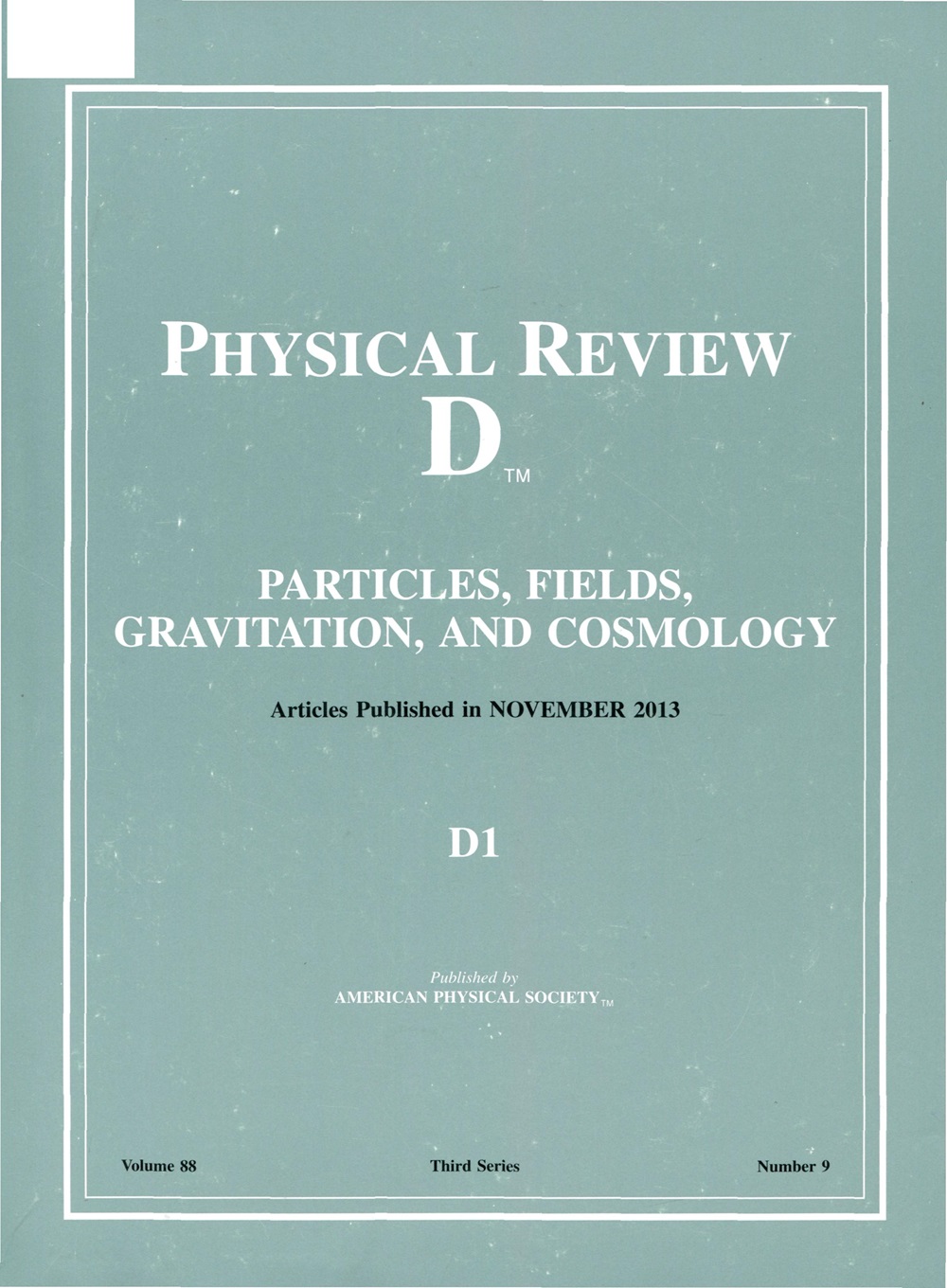无轴强CP问题解决方案:自发违反 CP 的情况
IF 5
2区 物理与天体物理
Q1 Physics and Astronomy
引用次数: 0
摘要
我们提出了一种替代轴子机制来解决QCD中的电荷宇称(CP)问题。我们的方法包括将CP作为拉格朗日的固有对称性,然后自发地打破它。为了生成汤川矩阵的正确纹理,我们引入了一个离散的Z2对称,它被标量势轻轻地打破。通过确定汤川耦合的基准点,该基准点与测量的夸克质量、Cabibbo-Kobayashi-Maskawa矩阵和低能量风味变化约束相一致,我们的研究结果表明,该模型为CP问题提供了可行的解决方案。2025年由美国物理学会出版本文章由计算机程序翻译,如有差异,请以英文原文为准。
Axionless strong CP problem solution: The spontaneous CP -violation case
We propose an alternative to the axion mechanism for addressing the charge parity (CP) problem in QCD. Our approach involves imposing C P Z 2 C P Published by the American Physical Society 2025
求助全文
通过发布文献求助,成功后即可免费获取论文全文。
去求助
来源期刊

Physical Review D
物理-天文与天体物理
CiteScore
9.20
自引率
36.00%
发文量
0
审稿时长
2 months
期刊介绍:
Physical Review D (PRD) is a leading journal in elementary particle physics, field theory, gravitation, and cosmology and is one of the top-cited journals in high-energy physics.
PRD covers experimental and theoretical results in all aspects of particle physics, field theory, gravitation and cosmology, including:
Particle physics experiments,
Electroweak interactions,
Strong interactions,
Lattice field theories, lattice QCD,
Beyond the standard model physics,
Phenomenological aspects of field theory, general methods,
Gravity, cosmology, cosmic rays,
Astrophysics and astroparticle physics,
General relativity,
Formal aspects of field theory, field theory in curved space,
String theory, quantum gravity, gauge/gravity duality.
 求助内容:
求助内容: 应助结果提醒方式:
应助结果提醒方式:


